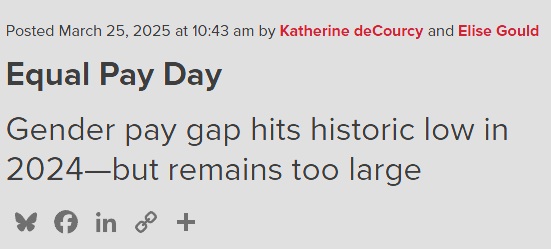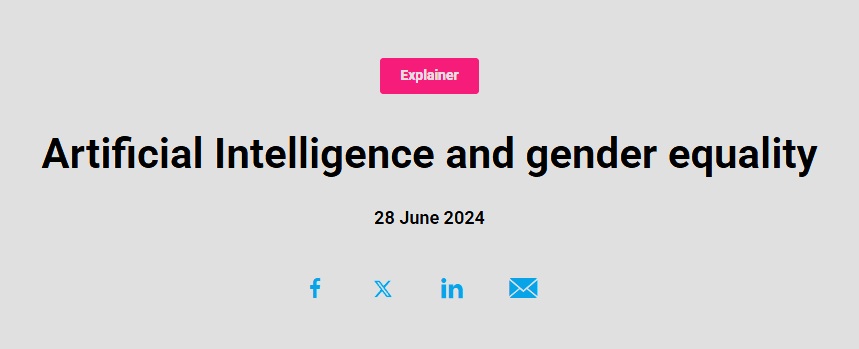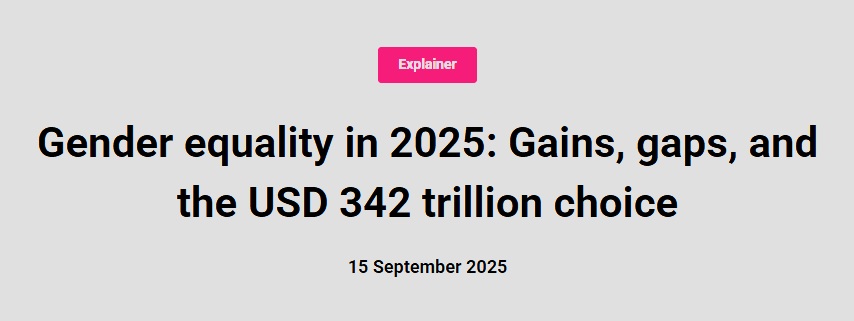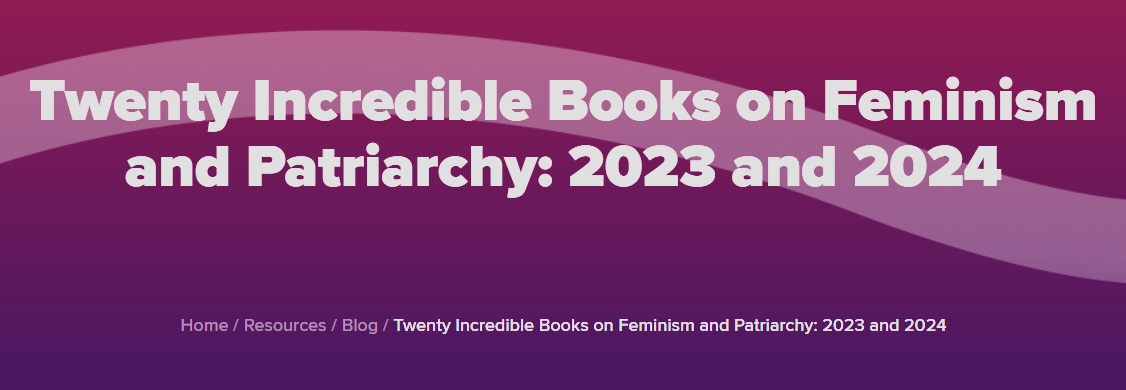Equal Pay Day 2024: Gender Pay Gap Hits Historic Low—But Remains Too Large

In 2024, women in the US earn an average of only 85% of what men earn, with the gender pay gap reaching a historic low of 18% but progress remains painfully slow. Women with advanced degrees face an even larger pay gap, losing over $32,500 annually. This economic inequality is not just a personal loss but a manifestation of systemic discrimination.
Related Topics
March 12, 2024, marks Equal Pay Day in the United States—the day that symbolizes how far into the year women must work to earn what men earned in the previous year. While the gender pay gap has reached a historic low, women still face severe economic inequality. This is not just about numbers but about fundamental issues of fairness, dignity, and economic justice.
The Stark Reality of the 2024 Pay Gap
Key Statistics
According to analysis from Pew Research Center and the Economic Policy Institute:
- Overall gap: Women earn an average of 85% of what men earn
- Hourly wage gap: After controlling for race, education, age, marital status, and state, women are paid 18.0% less per hour than men
- Annual loss: Full-time working women lose approximately $10,000 per year
- Lifetime loss: Over a 40-year career, women may lose over $400,000
Historical Context
While 18% is the lowest gap on record, the pace of improvement is frustrating:
- Over the past 20 years, the gap has narrowed by only 4 percentage points
- At the current rate, it would take over 100 years to achieve pay equity
- In some industries, the gap is actually widening
The Education Paradox: Higher Degrees, Bigger Gaps
Shocking Findings
One of 2024’s most disturbing discoveries is the relationship between education level and pay gaps:
The Plight of Highly Educated Women
- Women with advanced degrees face a wage gap of $15.66 per hour
- Annual loss exceeds $32,500
- Women with advanced degrees earn less on average ($49.45/hour) than men with only bachelor’s degrees ($50.01/hour)
This phenomenon is called the “education penalty”—women invest more in education but receive less return.
Occupational Segregation
The pay gap partially stems from occupational segregation:
- Women are concentrated in lower-paying industries
- Even within the same industry, women often occupy lower-level positions
- Women are underrepresented in STEM fields, which offer higher pay
Intersectional Analysis: Multiple Inequalities
The Intersection of Race and Gender
The pay gap affects women of color more severely:
- Black women: Earn only 67% of white men’s income
- Latina women: Earn only 57% of white men’s income
- Asian women: Earn 87% of white men’s income, but with significant internal variation
- Native American women: Earn only 59% of white men’s income
The Motherhood Penalty
Women with children face additional economic penalties:
- Each child reduces women’s earnings by approximately 4%
- Fathers experience a “fatherhood bonus,” with earnings increasing about 6%
- Single mothers face the most severe economic disadvantage
Global Perspective: International Comparisons
UK’s Regression
According to Fawcett Society data:
- The UK’s 2024 gender pay gap is 11.3%, up from 10.7% last year
- November 20th marks when UK women start “working for free”
- Financial services has the largest gap at 26.5%
Leading Countries
Some countries have made progress in closing the gap:
- Iceland: Laws requiring equal pay certification
- Norway: Mandatory pay transparency
- New Zealand: Public sector pay audits
Institutional Barriers
Pay Secrecy Culture
Many employers prohibit employees from discussing pay:
- About 60% of private sector workers are prohibited or discouraged from discussing wages
- Lack of transparency allows discrimination to persist
- Women often don’t know they’re underpaid
Negotiation Gap
Research shows:
- Women are less likely to negotiate starting salaries
- When women do negotiate, they’re more likely to face negative reactions
- Social expectations pressure women “not to be greedy”
Performance Review Bias
- Women’s achievements are often undervalued
- Men’s potential is overestimated
- Subjective evaluation criteria favor men
The Pandemic’s Lasting Impact
COVID-19 exacerbated gender inequality:
Disproportionate Impact
- Women were more likely to work in pandemic-affected industries
- School closures forced many mothers to leave the workforce
- Remote work “flexibility” often meant women took on more unpaid labor
Unequal Recovery
- Men’s employment recovered faster
- Women returning to work often accepted lower pay
- Care responsibilities continue limiting women’s career choices
Solutions and Actions
Legislative Measures
Paycheck Fairness Act
- Requires employers to prove pay differences are based on legitimate factors
- Prohibits discrimination based on salary history
- Protects the right to discuss pay
Pay Transparency Laws
- Require salary ranges in job postings
- Regular pay audits and reporting
- Public disclosure of executive-to-worker pay ratios
Corporate Actions
Progressive companies are taking steps:
- Pay audits: Regular review and adjustment of pay gaps
- Transparent policies: Open pay scales and promotion criteria
- Inclusive benefits: Parental leave and flexible work arrangements
- Mentorship programs: Supporting women’s career development
Individual Strategies
Actions women can take:
- Research market rates: Know your worth
- Negotiation skills: Learn effective negotiation strategies
- Build networks: Share salary information with other women
- Document achievements: Keep detailed records of accomplishments
Long-term Impacts
Retirement Security Crisis
The cumulative effect of pay gaps:
- Women’s retirement savings average 30% less than men’s
- Lower Social Security benefits
- Higher risk of poverty in old age
Intergenerational Effects
- Limits women’s ability to invest in children’s education
- Perpetuates poverty cycles
- Affects entire families’ economic mobility
Responding to Counterarguments
”The Gap Is Due to Choices”
Critics claim women “choose” lower-paying jobs. But:
- “Choices” are constrained by social expectations and discrimination
- Female-dominated professions are systematically undervalued
- Even in identical positions, women earn less
”The Gap Is Small Enough”
An 18% gap means:
- Women work 5 days for 4 days’ pay
- Lifetime income loss of hundreds of thousands
- Continued economic insecurity
The Importance of Global Solidarity
Pay equity requires international cooperation:
- Sharing best practices and successful strategies
- Unified standards for multinational corporations
- Coordinated action through International Labour Organization
Conclusion: Economic Justice Is Gender Justice
Equal Pay Day 2024 reminds us that despite some progress, the gender pay gap remains an urgent economic and moral issue. The 18% gap is not just a statistic—it represents stolen opportunities, deferred dreams, and persistent injustice.
Achieving pay equity requires systemic change: strong legislation, corporate accountability, cultural shifts, and sustained activism. Every day of delay means women continue earning less for the same work, facing greater economic insecurity.
As the Economic Policy Institute states: “The gender pay gap is not a myth but a measurable reality requiring measurable solutions.” It’s time to transform pay equity from aspiration to reality.
This article is based on data analysis from the Economic Policy Institute, Fawcett Society, and Pew Research Center
Related Articles

Gender Bias in AI: The 2024 Wake-Up Call
New research reveals 44% of AI systems show gender bias, while women's underrepresentation in tech is making it worse. From ChatGPT to image generators, AI is reinforcing harmful gender stereotypes.

Beijing+30: A Critical Moment for Global Women's Rights
2025 marks the 30th anniversary of the Beijing Declaration and Platform for Action. Despite progress, 24% of countries report backlash on gender equality, and 10% of women still live in extreme poverty. This is a critical moment to renew commitments.

Breaking Free: Why 'Equality' Is a Patriarchal Lie
New book 'Breaking Free' reveals how 'equality' is a racist, patriarchal ideal that keeps women and marginalized communities chasing an unattainable goal. True liberation requires not equality, but freedom.
Support Our Work
If this content has been helpful to you, please consider supporting us to continue curating quality feminist resources
☕ Buy me a coffeeComments & Discussion
Share your views and feelings about this article
Join the Discussion
Share your views and feelings about this article
Loading comments...